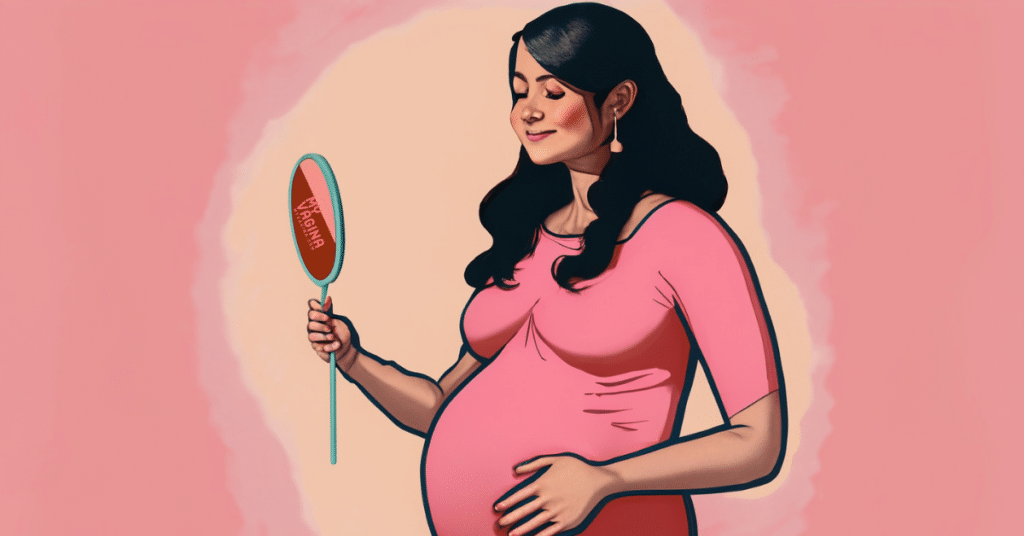Here we take you through the impact of the various birth control methods and pregnancy on vaginal pH and the risk of vaginal microflora imbalances like bacterial vaginosis (BV), aerobic vaginitis (AV) and maintenance of a healthy vaginal microbiome.
The combined oral contraceptive pill and vaginal pH
The combined oral contraceptive birth control pill regulates hormone levels with synthetic oestrogen and progesterone.
Those on oestrogen-containing birth control pills tend to experience less vaginal microflora imbalances due to the stabilisation of oestrogen levels and the resultant glycogen (lactobacilli food).
However, low-oestrogen birth control pills can actually reduce overall oestrogen levels, which can prove problematic for sustaining a healthy vaginal bacterial colony.
If you are on oestrogen-containing hormonal birth control, your pH will likely stay the same between periods since oestrogen levels – thus glycogen levels and lactobacilli populations – stay stable.
Depo Provera injection and the vaginal microbiome
Those on the Depo Provera contraceptive injection also see slightly lower levels of BV despite the injection blocking oestrogen.
It must be stressed that this slight protective effect of some forms of hormonal birth control is not a good reason to use it. It won’t help you. Those on hormonal birth control still get BV, and it can be just as hard to get rid of.
Intra-uterine devices (IUDs) and the vagina
Both hormonal and non-hormonal copper IUDs may be problematic for the vaginal microflora in their own ways. Still, the copper IUD is hands down the most problematic for some people.
The plastic and strings of all IUDs are a solid surface for biofilms to develop, which can keep vaginal dysbiosis hanging around despite good treatments.
Copper IUDs
Copper IUDs (such as the Paragard) are known to change the vaginal flora negatively by specifically inhibiting L. crispatus growth.
The copper ions also increase oestrogen locally in the uterus, causing that first year of often problematically heavy, long periods, which may contribute to the observation of higher rates of BV in those using this form of contraception.
Hormonal IUDs
The hormonal IUD (such as the Mirena) may contribute to yeast infections and a small increase in the risk of BV soon after insertion, but that appears to settle, and the vaginal microbiome appears largely unaffected.
Spermicides – very bad for the vaginal microbiome
Spermicides are known to alter the vaginal microbiome negatively, with any product containing Nonoxynol-9 being the worst, effectively acting like a ‘detergent’ in the vagina, causing irritation and a loss of protective flora.
Latex condoms and the vaginal microbiome
Condoms are often used most safely with lubricants and sometimes spermicides. Condoms may increase the risk of inflammation of the vagina due to friction and other irritations but are not otherwise usually associated with a change in vaginal microflora.

Diaphragms and cervical caps – negative impact on flora
Diaphragms and caps are both used with spermicide, which we know alters the vaginal microbiome negatively.
AV-related bacteria have been shown to significantly increase a week after commencing use of cervical caps or diaphragms, causing mechanical and chemical disturbances to the vaginal microbiome.
Contraceptive sponge impact on flora
Contraceptive sponges may contain Nonoxynol-9 spermicide, but natural sea sponges without spermicide are likely not a contributing factor to vaginal dysbiosis.
Take care to remove sponges at the correct intervals, avoiding prolonged insertion with blood sitting on the sponge inside the vagina.
Pregnancy vaginal microbiome
During pregnancy, we see higher progesterone and oestrogen. Pregnancy comes with its own vaginal microbiome ‘signature’ of dominance of lactobacilli species – L. crispatus, L. jensenii, L. johnsonii and L. iners. Richness and diversity decrease during pregnancy.

References1
- 1.Bakus C, Budge KL, Feigenblum N, Figueroa M, Francis AP. The impact of contraceptives on the vaginal microbiome in the non-pregnant state. Front Microbiomes. Published online January 30, 2023. doi:10.3389/frmbi.2022.1055472







